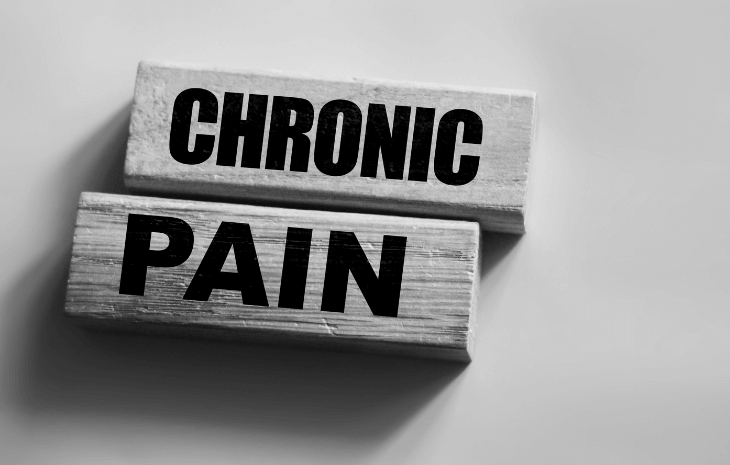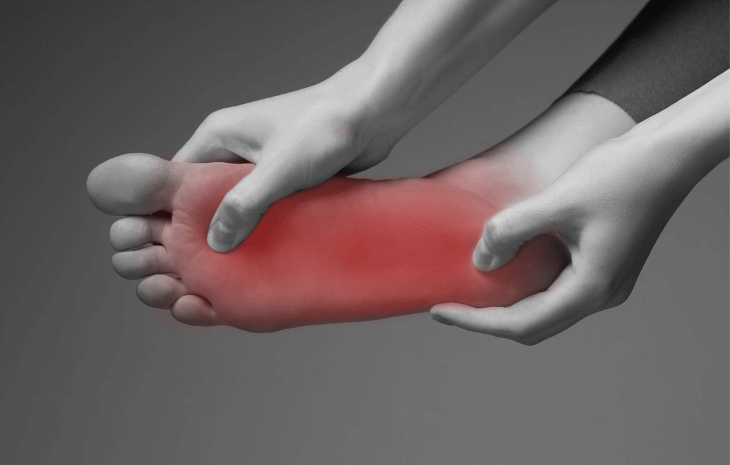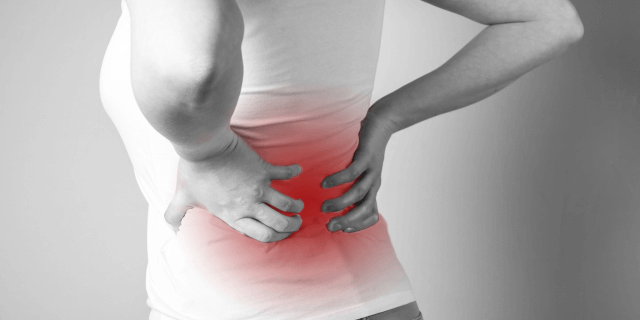Are you familiar with the CDC’s Clinical Practice Guideline for Prescribing Opioids? These evidence-based recommendations are designed to enhance chronic pain management and minimize the risks associated with opioid use through nonopioid pharmacotherapy. Developed by the Centers for Disease Control and Prevention (CDC) as a response to the opioid epidemic, these guidelines focus on primary care settings and emphasize tailoring treatment plans according to individual patient needs, utilizing nonopioid medications, nonopioid treatments, and nonopioid therapy.
Prescribing nonopioid medications alongside opioids can be a complex task, as finding the right balance between effective dosage and avoiding respiratory depression is crucial. The nonopioid pharmacotherapy guideline encourages healthcare providers to consider factors such as previous opioid exposure, prescribed dose, and PDMP data when determining an appropriate course of action for overdose prevention. By following these guidelines, healthcare professionals can ensure better patient outcomes while combating the challenges posed by chronic pain management and prescription medication.
So, how can we effectively navigate this landscape of prescribing opioids and incorporate nonopioid pharmacotherapy? Let’s delve into the details together and explore how these guidelines offer valuable insights and examples that promote safe and responsible practices in managing chronic pain with nonopioid therapies.
Best practices for managing chronic pain
Chronic pain can be effectively managed through a multimodal approach that combines nonopioid therapy, physical therapy, and opioid treatment. This comprehensive pain management approach improves pain relief and overall outcomes for patients.
One key aspect of these guidelines is the emphasis on considering nonopioid medications and nonpharmacologic treatments as first-line options. While prescribed opioids may play a role in managing chronic pain, it is crucial to explore alternative therapies that can minimize reliance on pharmaceuticals. Nonpharmacologic treatments such as physical therapy, cognitive-behavioral therapy, acupuncture, and mindfulness techniques have shown promising results in alleviating chronic noncancer pain. The guidelines aim to address the issue of opioid prescribing and promote the use of long-term opioids.
Ongoing assessment and monitoring of patients’ pain levels and functional status are critical components of effective chronic pain management, especially when it comes to opioid prescribing. Regular evaluations allow healthcare providers to track progress and make necessary adjustments to the treatment plan, ensuring that patients receive timely interventions tailored to their specific needs. This proactive approach also emphasizes the importance of nonopioid therapy, such as physical therapy, in managing chronic pain.
Shared decision-making between healthcare providers and patients is another cornerstone of best practices for managing chronic pain, including opioid prescribing. By involving patients in the decision-making process, treatment goals can be aligned with their preferences and values. This collaborative approach fosters trust, improves patient satisfaction, and enhances treatment adherence to nonopioid therapies such as physical therapy.
Exercise has emerged as an essential component of chronic pain management, especially for patients with osteoarthritis. Engaging in regular physical activity helps strengthen muscles, improve flexibility, and reduce inflammation, making it a valuable nonopioid therapy. Healthcare providers should encourage patients to incorporate appropriate exercises into their daily routine based on individual capabilities and preferences, as an alternative to opioid treatment.
In addition to these core principles, it is important for primary care physicians to stay informed about evolving guidelines regarding opioid prescribing practices. Rapid tapering or discontinuation of opioids without proper evaluation may lead to problematic withdrawal symptoms or undertreated pain conditions. Therefore, gradual dose reduction should be considered when tapering opioids while closely monitoring the patient’s response. It is also essential for physicians to explore nonopioid therapies as an alternative to pharmacologic treatments. One such nonopioid therapy that can be considered is buprenorphine.

Role of opioids in chronic pain management
Managing chronic pain can be a complex task, and healthcare professionals often turn to opioid medications as part of the treatment plan. However, it is important to follow specific guidelines when considering the use of nonopioid therapies, including nonopioid pharmacologic options like methadone and buprenorphine, in chronic pain management.
Cautious use of opioids
Healthcare providers recommend cautious use of nonopioid pharmacologic options, such as methadone, buprenorphine, and naloxone. Opioids should only be considered when the benefits outweigh the risks, particularly for severe pain or end-of-life care. This cautious approach helps minimize potential complications and ensures that patients receive appropriate pain relief.
Evaluation, informed consent, and regular reassessment
Before initiating prescribed opioid therapy, careful evaluation of the patient’s medical history is essential. Healthcare providers need to assess factors such as previous opioid use, risk for substance abuse or addiction, and any concurrent medical conditions that may influence treatment outcomes with additional opioids.
Informed consent is another crucial aspect when prescribing opioids, including buprenorphine. Patients must have a clear understanding of the potential risks associated with these prescription medications. This includes being aware of possible side effects and proper storage/disposal methods to prevent misuse or accidental ingestion by others. A comprehensive pain management approach may involve the use of naloxone.
Regular reassessment is necessary throughout opioid therapy to monitor the effectiveness of prescribed opioids and evaluate any adverse effects. Adjustments in dosage or alternative treatments may be required based on ongoing assessments of additional opioids.
Limiting duration and dose
To mitigate the risks associated with long-term opioid therapy, it is important to limit both the duration and dosage of opioids whenever possible. Using the lowest effective dose of methadone or buprenorphine helps minimize potential side effects while still providing adequate pain relief. This approach also considers nonopioid alternatives for pain management.
For acute conditions like postoperative pain, short-term prescribed opioids are generally sufficient. In contrast, chronic conditions may require longer-term management strategies that involve nonopioid therapies alongside limited-duration additional opioids.
Educating patients about risks and side effects
Patient education plays a vital role in safe opioid use for chronic pain management, including the use of buprenorphine and methadone as nonopioid alternatives. It is crucial for healthcare providers to educate patients about potential risks and side effects associated with opioids, such as naloxone for overdose prevention. This includes the risk of dependence, respiratory depression, constipation, and other common side effects.
Furthermore, patients should be informed about proper storage and disposal methods to prevent accidental ingestion by children or others who may not have a prescription for prescribed opioids. Education empowers patients to make informed decisions regarding their pain management and promotes responsible use of la opioids, full agonist opioids, and buprenorphine.
Assessing risks and addressing harms of opioid use
Chronic pain management guidelines emphasize the importance of assessing risks associated with long-term opioid therapy, specifically prescribed opioids. By implementing strategies to identify patients at risk for adverse outcomes from la opioids, healthcare providers can ensure patient safety while effectively managing chronic pain using nonopioid alternatives such as methadone.
One crucial tool in assessing risks is urine drug testing (UDT). UDT allows healthcare providers to monitor patients for active substance use, ensuring that buprenorphine and methadone medications are being used as prescribed and not in combination with other substances that may increase the risk of overdose or adverse effects. Prescription drug monitoring programs (PDMPs) provide valuable information about a patient’s medication history, allowing healthcare providers to identify any red flags such as multiple prescribers or excessive dosing.
Risk assessment questionnaires also play a significant role in identifying patients who may be at higher risk for opioid-related harms. These questionnaires evaluate various risk factors such as a history of substance abuse, mental health disorders, or previous overdose events. By incorporating these questionnaires into routine assessments, healthcare providers can proactively address potential risks before initiating or continuing prescribed opioids.
It is essential to have open discussions with patients about the potential harms associated with opioids, such as buprenorphine and methadone. This includes discussing the risk of overdose, addiction, respiratory depression, constipation, and other adverse effects. By providing education on these risks and engaging in shared decision-making conversations with patients, healthcare providers empower individuals to make informed choices about their pain management options, including nonopioid prescribing.

Toxicology testing can further aid in monitoring patient safety during long-term opioid therapy. Regular toxicology screenings help identify any additional substances being used by the patient that may interact negatively with opioids, such as naloxone, methadone, and buprenorphine, or increase the risk of adverse events. Monitoring alcohol use is particularly important since it can potentiate the sedative effects of opioids and contribute to overdose deaths.
In cases where opioids are deemed necessary but there are concerns about patient safety or increased risks due to a history of substance abuse, healthcare providers may consider additional cautionary measures. This could involve dose reduction, prescribing naloxone alongside opioids for overdose prevention, or exploring alternative nonopioid pain management strategies such as buprenorphine or methadone.
Noninvasive nonpharmacologic approaches to pain
Chronic pain can significantly impact a person’s quality of life, affecting their physical and mental well-being. While medications are often used to manage pain, there is increasing recognition of the importance of noninvasive nonpharmacologic approaches, such as nonopioid therapies, in chronic pain management guidelines. These alternative therapies offer potential benefits and should be considered as first-line options for individuals seeking relief from chronic pain, instead of solely relying on prescribed opioids.
Exploring alternative therapies
Nonpharmacologic approaches, including nonopioid medications, are a range of treatments that do not rely on medication or invasive procedures for chronic noncancer pain. These therapies aim to address the underlying causes of pain and improve overall well-being. Some common noninvasive treatments for long-term opioid therapy include.
- Physical therapy: This therapeutic approach involves exercises, stretches, and manual techniques to reduce pain, improve mobility, and enhance function. Physical therapists work closely with patients to develop personalized treatment plans tailored to their specific needs. These therapies are supported by clinical evidence and can be used in conjunction with medications prescribed by clinicians.
- Cognitive-behavioral therapy (CBT) is one of the therapies commonly used in opioid treatment for patients. CBT focuses on changing negative thought patterns and behaviors associated with pain. It helps individuals develop coping strategies, relaxation techniques, and problem-solving skills to better manage their symptoms. Medications may also be prescribed to patients undergoing opioid treatment.
- Acupuncture therapies, originating from traditional Chinese medicine, involve the insertion of thin needles into specific points on the body. This practice aims to stimulate nerves, muscles, and connective tissues to alleviate pain. Acupuncture can be used as an alternative to medications and opioids in opioid treatment.
- Exercise programs, including swimming or cycling, are effective therapies for managing chronic pain in patients. Regular exercise improves strength, flexibility, and overall fitness levels, making it particularly beneficial for individuals undergoing opioid treatment or taking medications for chronic conditions.
The benefits of mind-body interventions
In addition to these alternative therapies, mind-body interventions have gained recognition for their potential in chronic pain management. Techniques such as relaxation training and meditation promote relaxation responses within the body that can help reduce stress levels and alleviate pain. These approaches offer a nonopioid option for pain relief, complementing opioid therapy and opioid treatment.
Relaxation techniques, such as deep breathing exercises or guided imagery, can provide temporary relief from chronic pain in patients undergoing opioid therapy or taking other medications. These therapies promote calmness and reduce muscle tension.
Meditation, on the other hand, involves focusing attention and eliminating distracting thoughts. This practice has been shown to decrease pain perception and improve overall well-being. Mindfulness meditation, in particular, encourages individuals to be present in the moment without judgment, allowing them to better cope with their pain. These therapies are effective alternatives to opioid therapy and opioid treatment for managing pain.
Collaborating for personalized treatment plans
To effectively implement nonopioid therapies and noninvasive nonpharmacologic approaches, it is essential for healthcare providers to collaborate with patients in developing personalized treatment plans. Each individual’s experience of chronic pain is unique, requiring tailored interventions that address their specific needs and preferences, rather than relying solely on opioid therapy and medications.
By actively involving patients in decision-making processes, healthcare providers can ensure that opioid therapy treatment plans align with their goals and values. This collaborative approach empowers individuals to take an active role in managing their pain while fostering a sense of ownership over their health. Clinicians play a crucial role in prescribing these therapies.
Interventional Approaches to Subacute and Chronic Pain
Interventional approaches play a crucial role in managing subacute and chronic pain conditions, including opioid therapy and nonopioid treatments. These therapies, such as nerve blocks, epidural injections, and radiofrequency ablation, offer targeted relief for patients suffering from persistent pain. However, it is essential to consider certain factors before opting for these interventions in opioid treatment.
Patient selection is crucial when considering interventional procedures for opioid therapy. Clinicians must evaluate the patients’ medical history, including any acute pain conditions or traumatic injuries that may contribute to their chronic pain. Treatment goals and realistic expectations should be clearly defined and discussed with the patients regarding their medications and therapies.
Informed consent is another critical aspect before prescribing medications and proceeding with interventional therapies. Patients need to be fully aware of the potential benefits and risks associated with these procedures. Clinicians should take the time to explain the procedure thoroughly, outlining possible outcomes and addressing any concerns or questions raised by the patient, following the guideline.
One significant advantage of interventional therapies is their ability to provide localized relief by targeting specific pain pathways. For example, nerve blocks can temporarily disrupt pain signals transmitted along specific nerves, offering immediate relief in certain cases. Epidural injections can deliver medication directly into the epidural space surrounding the spinal cord, reducing inflammation and alleviating discomfort. These interventions are effective alternatives to opioid therapy and opioid treatment, providing nonopioid options for pain management.
However, it is important to note that while interventional therapies can be highly effective for some patients in treating postoperative pain and back pain, they may not be suitable for everyone. Some individuals may experience only partial relief or find that their symptoms return after a period of time. There are potential risks associated with these treatment approaches, including infection, bleeding, nerve damage, or allergic reactions to medications used during the intervention.
For more complex cases or when conservative therapies, such as opioid therapy, have failed to provide adequate relief, referral to a pain specialist may be beneficial for patients. Pain specialists have extensive knowledge and experience in managing chronic pain conditions and can offer a broader range of interventional options tailored specifically to each patient’s needs. Clinicians can rely on pain specialists for expert guidance in opioid therapy and other therapies.
Certain studies suggest that interventional approaches can be particularly beneficial for patients with reversible causes of pain, such as hepatic insufficiency or specific conditions like neuropathic pain. In these cases, opioid therapy and nonopioid therapies may provide temporary relief while underlying conditions are addressed.

Managing Opioid Misuse and Opioid Use Disorder
Identifying signs of opioid misuse or addiction in patients receiving long-term opioid therapy, such as buprenorphine, is crucial for effective chronic pain management. Healthcare providers play a vital role in recognizing these indicators and implementing strategies to manage patients with opioid use disorder and prevent overdose.
Recognizing Signs of Opioid Misuse
It is essential for healthcare providers to be vigilant in monitoring patients on long-term opioid therapy, particularly those taking opioids such as buprenorphine, for any signs of opioid misuse or overdose. Some common red flags include postoperative pain.
- Doctor shopping: Patients seeking opioids from multiple healthcare providers.
- Frequent early refills: Requesting prescription refills before the scheduled due date.
- Lost prescriptions: Claiming to have lost their prescription medications repeatedly.
- Escalating doses: Increasing the dosage without medical advice.
- Social isolation and neglecting responsibilities: Neglecting personal relationships, work, or other obligations due to drug-seeking behavior.
Strategies for Managing Patients with Opioid Use Disorder
When faced with a patient experiencing opioid use disorder, healthcare providers must adopt comprehensive strategies that address both the physical and psychological aspects of addiction. Key considerations include buprenorphine treatment for LA opioids and overdose.
- Medication-Assisted Treatment (MAT): MAT involves combining medication, such as buprenorphine or methadone, with counseling and behavioral therapies to help patients overcome addiction while managing chronic pain effectively.
- Support Services and Counseling: Offering support services like group therapy, individual counseling, and peer support can significantly aid patients in their recovery journey.
- Access to Naloxone: Providing access to naloxone, an opioid overdose reversal agent, can save lives in case of accidental overdoses.
- Collaboration with Local Resources: Staying updated on local resources available for treating opioid use disorder ensures that healthcare providers can refer patients to specialized treatment centers when necessary.
The Importance of Long-Term Opioid Therapy Management
While opioid medications, such as LA opioids, can provide relief for chronic pain, it is crucial to closely monitor patients for potential overdose and make informed decisions regarding their treatment, including the use of buprenorphine. Careful consideration must be given to ensure patient safety and well-being.
- Opioid Tapering: Gradually reducing opioid dosages under medical supervision can help minimize withdrawal symptoms and reduce the risk of addiction.
- Individualized Treatment Plans: Developing personalized treatment plans that consider a patient’s specific needs, goals, and response to therapy is essential for successful long-term management.
- Preventing Neonatal Opioid Withdrawal Syndrome: For pregnant patients on opioids, healthcare providers should work closely with obstetricians to ensure proper management of neonatal opioid withdrawal syndrome in newborns.
By implementing these guidelines and strategies, healthcare providers can effectively manage chronic pain while mitigating the risks associated with long-term opioid therapy. Recognizing signs of misuse or addiction, providing appropriate support services, counseling, and access to naloxone are critical steps towards ensuring the well-being of patients with substance use disorders. Additionally, incorporating buprenorphine and other LA opioids into the treatment plan can further enhance patient outcomes and reduce the reliance on traditional opioid medications.
Summary of Chronic Pain Management Guidelines
In conclusion, effectively managing chronic pain requires a comprehensive approach that considers both pharmacologic and nonpharmacologic interventions. The guidelines provide best practices for healthcare professionals to effectively address this complex issue, including the use of opioid therapy and other medications as part of the treatment plan for patients. Here are the key points to remember.
- Best practices for managing chronic pain: These guidelines emphasize the importance of individualized treatment plans tailored to each patient’s needs. It is crucial for clinicians to consider a combination of medications, including opioids, physical therapy, and psychological support for patients.
- Role of buprenorphine and other medications in chronic pain management: While opioids, including buprenorphine, can be effective in relieving pain, their use should be carefully evaluated due to the potential risks and side effects associated with long-term use. Non-opioid alternatives should be considered as first-line treatments whenever possible to reduce the risk of overdose for patients.
- Assessing risks and addressing harms of opioids: Healthcare providers must assess patients for risk factors associated with opioid misuse or addiction before prescribing buprenorphine or other opioids. Regular monitoring and close follow-up are essential to identify any potential overdose or treatment-related harms early on.
- Noninvasive nonpharmacologic approaches to pain treatment: The guidelines highlight the importance of noninvasive techniques such as physical therapy, cognitive-behavioral therapy, acupuncture, and mindfulness-based interventions in managing chronic pain without relying solely on medications. Clinicians can use these techniques to provide effective treatment options for patients, including the use of buprenorphine.
- Interventional approaches to subacute and chronic pain: In some cases, interventional procedures like nerve blocks or spinal cord stimulation may be considered when other treatments, such as opioid therapy or medications, have been ineffective for patients. These procedures can provide targeted relief for specific types of chronic pain.
- Managing opioid misuse and opioid use disorder: For individuals who develop opioid misuse or addiction issues, prompt intervention is crucial. The guidelines recommend a multidisciplinary approach involving buprenorphine and other LA opioids medications combined with counseling and behavioral therapies to prevent overdose.
It is important for clinicians to stay up-to-date with guidelines on opioid therapy and continuously educate themselves on emerging evidence-based practices in chronic pain management, particularly for patients with opioid use disorder.
Remember that everyone’s experience with chronic pain and opioid therapy is unique, and treatment plans should be tailored accordingly. If you or someone you know is experiencing chronic pain and requires opioids, consult with a healthcare professional to develop an individualized plan that addresses your specific needs. Clinicians can provide guidance on the appropriate use of opioids for patients.
FAQs
Q: Are opioids the only option for managing chronic pain?
A: No, opioids such as buprenorphine are just one of many medications available for managing chronic pain in patients. Nonpharmacologic approaches such as physical therapy, cognitive-behavioral therapy, and alternative treatments can also be effective in providing relief and reducing the risk of overdose.
Q: Can I become addicted to opioids if I use them for chronic pain?
While there is a risk of developing dependence or addiction with long-term opioid use, including la opioids, it does not mean that everyone will experience these issues. Close monitoring by healthcare professionals can help minimize the risks associated with opioid use, including buprenorphine.
Q: Are noninvasive approaches as effective as medications for managing chronic pain?
A: Noninvasive approaches, including opioid therapy, can be highly effective in managing chronic pain for patients. These techniques aim to address the underlying causes of pain and provide long-term relief without relying solely on medications. Clinicians often prescribe buprenorphine as part of noninvasive pain management strategies.
Q: How can healthcare providers help individuals struggling with opioid misuse?
Healthcare providers play a crucial role in identifying and addressing opioid misuse. They can provide support through medication-assisted treatment (MAT) with buprenorphine, counseling services, and connecting individuals to appropriate resources for recovery from overdose.
Q: What should I do if my current treatment plan is not effectively managing my chronic pain?
If your current opioid therapy treatment plan is not providing adequate relief for patients, it’s important to discuss this with your healthcare provider. They can reassess your condition and explore alternative medications to better manage your chronic pain.




